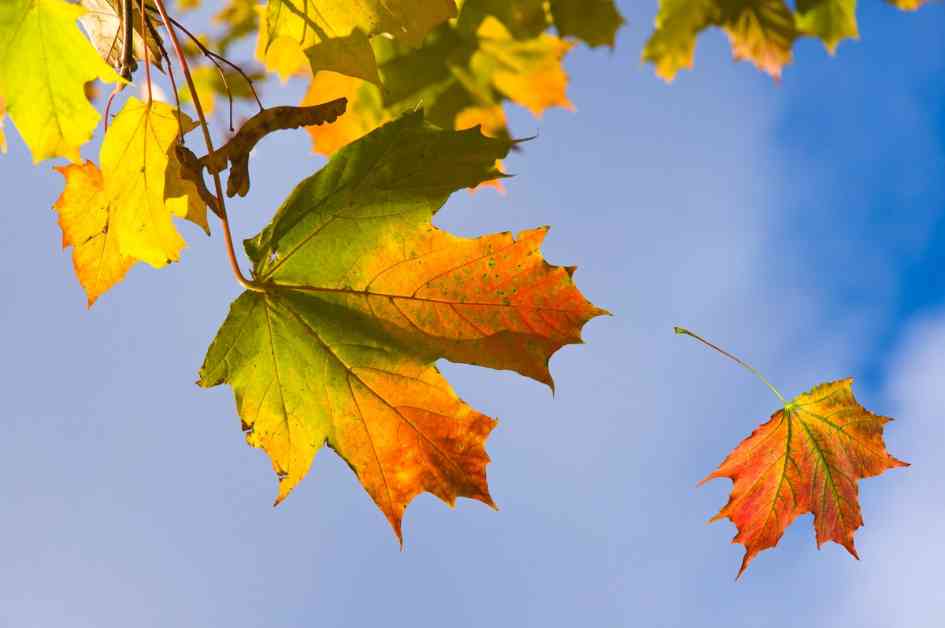The changing colors of fall leaves on trees offer more than just a beautiful sight – they also provide valuable insights into the health of the trees and the impact of climate change. As we witness the transition from green to yellow, red, and orange hues, it is a clear sign that autumn has arrived and winter is on its way.
Deciduous trees, such as oaks and maples, shed their leaves in preparation for the harsh winter conditions. This process allows the trees to reabsorb important nutrients from the leaves and store energy for the next growing season. The vibrant colors we see in the fall are a result of the trees pulling out chlorophyll, revealing yellow carotenoids or producing new red and purple anthocyanins.
However, the timing and progression of fall foliage can also indicate the health of the tree. Early onset of fall colors may be a sign of stress and could suggest that the tree is struggling. Factors such as drought, wet autumns, or early freezes can affect the vibrancy of the foliage and impact the overall health of the tree.
Climate change plays a significant role in altering the patterns of fall foliage. As temperatures warm, we may see less vibrant autumn seasons. The lengthening of the foliage season due to milder fall temperatures can result in a staggered display of colors among different tree species, disrupting the usual synchronized fall foliage we are accustomed to.
Furthermore, the changing forest ecosystems due to invasive species and environmental variations can further impact the beautiful display of fall colors. Native species, adapted to their specific environment, may struggle to adjust to unusual seasonal changes, while invasive species could thrive and extend their growing season, potentially diluting the vibrant autumn foliage.
Despite the complexity of factors influencing fall foliage, it remains a fascinating and unpredictable phenomenon. Each tree responds uniquely to its immediate surroundings, creating a diverse and varied display of colors. Exploring the different timings of fall colors in your local area can be a rewarding experience, highlighting the individuality of trees and their responses to changing conditions.
In conclusion, the colors of fall leaves not only provide a picturesque backdrop to the season but also serve as a valuable indicator of tree health and the impact of climate change. By observing and understanding the nuances of fall foliage, we can gain insight into the resilience of trees and the ever-evolving natural world around us.










